Standard: SS7G4 The student will analyze the diverse cultures of the people who live in Africa.
Arab
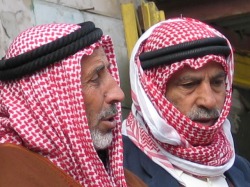
Arab people began to spread into North Africa in the late 600s AD.
They took Islam and the Arabic language with them. Arabic was necessary in order to read the Quran, Islam's holy book.
Today the arabic language, the religion of Islam, and many other aspects of Muslim culture are found throughout Africa.
They make up the majority of people living along the Mediterranean coast and in some countries along the Indian Ocean in the east.
They took Islam and the Arabic language with them. Arabic was necessary in order to read the Quran, Islam's holy book.
Today the arabic language, the religion of Islam, and many other aspects of Muslim culture are found throughout Africa.
They make up the majority of people living along the Mediterranean coast and in some countries along the Indian Ocean in the east.
Ashanti
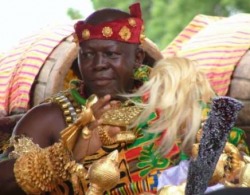
The Ashanti people are found in the modern country of Ghana.
They have been a powerful group in this part of Africa for over 300 years.
The Ashanti believe that their kingdom was founded with the help of a holy man who produced a Golden Stool from the heavens and gave it to the first Ashanti king.
The Stool came to symbolize Ashanti power and the belief that the kingdom will last as long as the golden stool remains in the hands of the Ashanti king.
The traditional Ashanti religion is centered on a supreme god, or Nayme. His many children, the Abosom, represent all the natural powers and forces in the world.
The traditional Ashanti believe that all living things have souls.
They also believe that witches, demon spirits, and fairies have powers in their lives.
Ancestors are given great respect, and there are several family rituals for births, puberty, marriage, and death.
Some Ashanti also practice Christianity and Islam.
There are a large number of Muslims.
Likes so many other places in Africa, movement of people has resulted in a great deal of diversity in nearly all aspects of life among the Ashanti.
They have been a powerful group in this part of Africa for over 300 years.
The Ashanti believe that their kingdom was founded with the help of a holy man who produced a Golden Stool from the heavens and gave it to the first Ashanti king.
The Stool came to symbolize Ashanti power and the belief that the kingdom will last as long as the golden stool remains in the hands of the Ashanti king.
The traditional Ashanti religion is centered on a supreme god, or Nayme. His many children, the Abosom, represent all the natural powers and forces in the world.
The traditional Ashanti believe that all living things have souls.
They also believe that witches, demon spirits, and fairies have powers in their lives.
Ancestors are given great respect, and there are several family rituals for births, puberty, marriage, and death.
Some Ashanti also practice Christianity and Islam.
There are a large number of Muslims.
Likes so many other places in Africa, movement of people has resulted in a great deal of diversity in nearly all aspects of life among the Ashanti.
Bantu
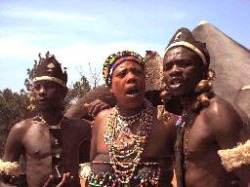
Africa is made up of hundreds of Bantu-related languages and many different ethnic groups. However, they all share the same cultural characteristics.
Bantu are animal herders and farmers. They have also learned to make crafts from iron.
The Bantu people have followed rivers and streams and migrated throughout Africa. They met many new people, learned new skills, and shared their own.
They intermarried with the people they met accepting new traditions and blending them with Bantu culture.
Today over 60 million people in central and southern Africa speak Bantu-based languages and share some part of Bantu culture.
Bantu who settled in areas where there was a strong Arab presence are Muslim.
Others, living in parts of Africa influenced by missionary efforts are Christian.
Still others follow traditional animist religions, believing spirits are found in natural objects and surroundings. They may feel a spiritual presence in rocks, trees, a waterfall, or a particulary beautiful place in the forest.
Bantu are animal herders and farmers. They have also learned to make crafts from iron.
The Bantu people have followed rivers and streams and migrated throughout Africa. They met many new people, learned new skills, and shared their own.
They intermarried with the people they met accepting new traditions and blending them with Bantu culture.
Today over 60 million people in central and southern Africa speak Bantu-based languages and share some part of Bantu culture.
Bantu who settled in areas where there was a strong Arab presence are Muslim.
Others, living in parts of Africa influenced by missionary efforts are Christian.
Still others follow traditional animist religions, believing spirits are found in natural objects and surroundings. They may feel a spiritual presence in rocks, trees, a waterfall, or a particulary beautiful place in the forest.
Swahili
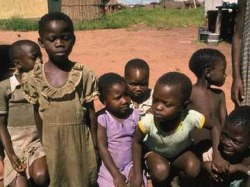
The Swahili culture is a mix of people who claim ancestors in Africa, in Arabia, and even across the Indian Ocean.
Many people in Kenya, Tanzania, and Mozambique share the Swahili culture, language, history, and traditions.
The Swahili language is considered a Bantu language but there are many Arabic words and phrases included.
Most Swahili are city dwellers rather than traditional farmers and herdsmen. However, many are engaged in fishing and trade, as their ancestors were.
Most are Muslims but also follow local beliefs that have been part of their culture since before Muslim traders arrived in Africa over a thousand years ago.
The local beliefs are known as mila.
One mila is that there are spirits that can possess a person. Many Swahili see a close link between their religious beliefs and the practice of medicine and healing. Herbal medicines are often given along with prescribed prayers and rituals that are all thought to be part of the cure.
Many people in Kenya, Tanzania, and Mozambique share the Swahili culture, language, history, and traditions.
The Swahili language is considered a Bantu language but there are many Arabic words and phrases included.
Most Swahili are city dwellers rather than traditional farmers and herdsmen. However, many are engaged in fishing and trade, as their ancestors were.
Most are Muslims but also follow local beliefs that have been part of their culture since before Muslim traders arrived in Africa over a thousand years ago.
The local beliefs are known as mila.
One mila is that there are spirits that can possess a person. Many Swahili see a close link between their religious beliefs and the practice of medicine and healing. Herbal medicines are often given along with prescribed prayers and rituals that are all thought to be part of the cure.
Literacy
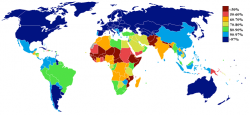
Literacy, or the ability to read and write, has a big effect on the standard of living of a country.
Those who cannot read or write have a very difficult time finding decent jobs.
Lack of education also prevents many young people from becoming engineers, doctors, scientists, or business managers that countries need in order to improve.
Many parts of Africa have lower literacy rates than found in Europe or the United States.
Often school is available to only those who can afford to pay to attend.
Many countries in Africa are working hard to raise literacy rates among young people.
Girls tend to have less opportunity to go to school than boys in many areas of Africa.
The United Nations and the World Bank are currently working with many African countries to try to bring educational opportunities to their people.
Those who cannot read or write have a very difficult time finding decent jobs.
Lack of education also prevents many young people from becoming engineers, doctors, scientists, or business managers that countries need in order to improve.
Many parts of Africa have lower literacy rates than found in Europe or the United States.
Often school is available to only those who can afford to pay to attend.
Many countries in Africa are working hard to raise literacy rates among young people.
Girls tend to have less opportunity to go to school than boys in many areas of Africa.
The United Nations and the World Bank are currently working with many African countries to try to bring educational opportunities to their people.
